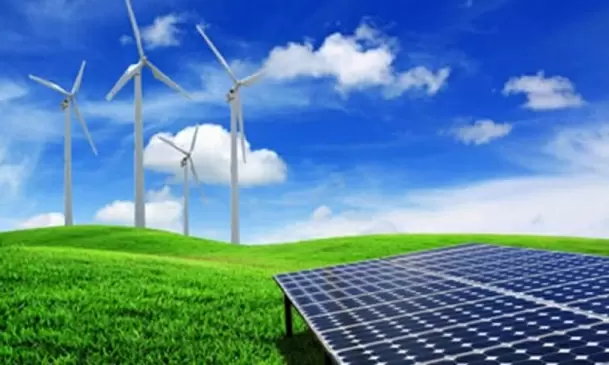Global electricity demand growing faster than renewables: IEA
New Delhi
15-July-2021

Photo: IANS
Renewables are expanding quickly but not enough to satisfy a strong rebound in global electricity demand this year, resulting in a sharp rise in the use of coal power that risks pushing carbon dioxide emissions from the electricity sector to record levels next year, a new report from the International Energy Agency (IEA) said on Thursday.
The majority of the increase in electricity demand is expected to come from the Asia Pacific region, primarily China and India.
Based on current policy settings and economic trends, electricity generation from renewables - including hydropower, wind and solar PV - is on track to grow strongly around the world over the next two years - by eight per cent in 2021 and by more than six per cent in 2022.
But even with this strong growth, renewables will only be able to meet around half the projected increase in global electricity demand over those two years, according to the new IEA report.
A
Fossil fuel-based electricity generation is set to cover 45 per cent of additional demand in 2021 and 40 per cent in 2022, with nuclear power accounting for the rest.
As a result, CO2 emissions from the electricity sector - which fell in both 2019 and 2020 - are forecast to increase by 3.5 per cent in 2021 and by 2.5 per cent in 2022, which would take them to an all-time high.
Watch This TWL Video
Renewable growth has exceeded demand growth in only two years: 2019 and 2020. But in those cases, it was largely due to exceptionally slow or declining demand, suggesting that renewables outpacing the rest of the electricity sector is not yet the new normal.
"Renewable power is growing impressively in many parts of the world, but it still isn't where it needs to be to put us on a path to reaching net-zero emissions by mid-century," said Keisuke Sadamori, the IEA Director of Energy Markets and Security.
"As the economy rebounds after the pandemic, we've seen a surge in electrical generation from fossil fuels. To shift to a sustainable trajectory, we need to massively step up investment in clean energy technologies - especially renewables and energy efficiency.aA
In the pathway set out in IEA's recent Roadmap to Net Zero by 2050, nearly three-quarters of global emissions reductions between 2020 and 2025 take place in the electricity sector.
To achieve this decline, the pathway calls for coal-fired electricity generation to fall by more than six per cent a year.
However, coal-fired electricity generation is set to increase by almost five per cent this year and by a further three per cent in 2022, potentially reaching an all-time high, according to the Electricity Market Report. Gas-fired generation, which declined two per cent in 2020, is expected to increase by one per cent in 2021 and by nearly two per cent in 2022.
The growth of gas lags that of coal because it plays a smaller role in the fast-growing economies in the Asia Pacific region and it faces competition from renewables in Europe and North America.-IANS
More Headlines
Erode East Bypoll: DMK Set for Big Win, Survey Shows 59.5% Support
Nil Tax Till Rs 12 Lakh: How Taxpayers Will Benefit From Tax Slab Changes In Budget 2025-26
Budget 2025: Income Tax Exemption Raised to ₹12 Lakh
Maoist Kothehonda Ravi Surrenders in Karnataka
Salman Khan’s Ex-Girlfriend Somy Ali Wants To Make A Film On Her Own Life
Erode East Bypoll: DMK Set for Big Win, Survey Shows 59.5% Support
Nil Tax Till Rs 12 Lakh: How Taxpayers Will Benefit From Tax Slab Changes In Budget 2025-26
Budget 2025: Income Tax Exemption Raised to ₹12 Lakh
Maoist Kothehonda Ravi Surrenders in Karnataka
Salman Khan’s Ex-Girlfriend Somy Ali Wants To Make A Film On Her Own Life










